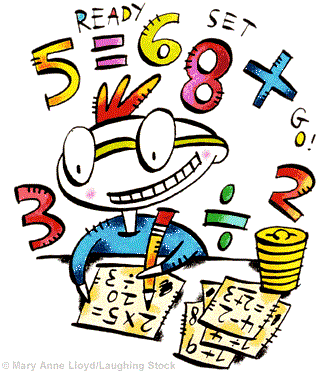It happens; you didn’t do as well as you’d hoped on Praxis Core Math, either in practice or in the actual test. Maybe you’re not a “math person,” or maybe you are pretty good at math, but are out of practice on certain types of problem solving. Either way, many test takers find that the need to improve their Praxis Core math score in order to meet teacher licensing requirements. In this post, we’ll look at some ways that Praxis Core test-takers can build on their strengths and address their weaknesses on the Math exam.
Improve your pacing
As I’ve said before, it’s crucial to refine your pacing skills as you prepare for Core Math. This includes being able to skip irrelevant information in problems. Don’t spend time examining and thinking about variables that aren’t needed for the answer. If a math problem asks about just one or two points on a line or shape, you don’t need to look at the other points. Similarly, Praxis story problems often include details that simply aren’t needed to calculate the answer.
Make sure you are also able to recognize when a question is logic-based and requires no time-consuming calculations. Take this practice question (from the official Core Math Interactive Praxis Exam):
- In the last step of a computation, Evelyn added 290 instead of subtracting 290. What one number can Evelyn subtract from her final result of 3,710 so that the correct result of the computation is displayed on the calculator and she does not have to clear her calculator and start over?
a. 290
b. 435
c. 580
d. 855
e. 870
Here, the Praxis throws a lot of big, intimidating numbers at you. But the answer is completely based on logic, and can be solved without any complex equations.
Logically, if you should have added X to something but you subtract X instead, you can correct your mistake by adding X to the result of the subtraction twice. Sarah must add X the first time to undo the subtraction of X and return to the original number; then she needs to add X a second time because she should have added X to the original number to begin with. 290 + 290 is a simple calculation you can do in your head.
The more quickly you’re able to recognize this kind of logic in Praxis questions, the more quickly you’ll be able to get to the answer.
Mental math is another biggie for improved pacing. Practice doing calculations in your head as much as you can, and learn good mental math shortcuts (details in Mike’s post on mental math). Mental math is crucial to pacing because it’s nearly always faster than a calculator. So also make an effort to use your calculator wisely and sparingly.
Improve your content knowledge
Praxis Core math covers some basic math subject area knowledge related to geometry, the coordinate plane, statistics, algebra, operations with fractions, and square roots. As you practice and review questions you struggled with, make note of the math areas you are weak in. Analyze exactly why you struggle in certain areas.
Sometimes it’s simply a matter of understanding the math term used on the test; in that case you can review Core Math vocabulary lists such as this one from the Dummies website. At other times, you may have forgotten or misused a math formula or mathematical property. Check Mike’s list of important Core Math formulas and properties to improve your understanding.
Become more fluent with the math that you know
The best way to build on any math strengths is to practice using them. Don’t just learn mental math to improve your pacing—learn it to gain a deeper, more internal understanding of calculations. Don’t skim story problems just to try to find the relevant information as quickly as possible—analyze the structure of Core story problems so that you can understand them more internally. And don’t just memorize vocabulary or formulas—actively use the formulas and the math terms, so you can truly understand the principles behind them.






Leave a Reply